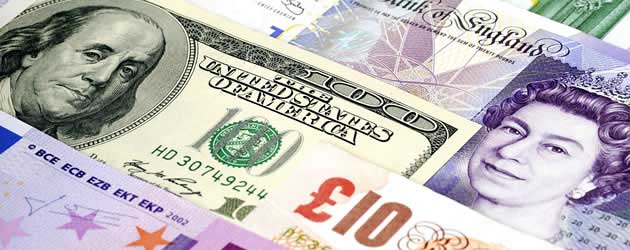
The Pound to US Dollar exchange rate advanced by around 0.7 cents last night to reach a fresh 8-month high of 1.5951, whilst the Australian Dollar pushed GBP/AUD to a daily low of 1.6973 and the New Zealand Dollar strengthened by around a cent against Sterling, bringing GBP/NZD down to 1.9440.
Global risk appetite improved immensely last night as traders interpreted the news that Larry Summers will not be in the running to become the next Fed Chairman to mean that asset purchases will not be reduced aggressively.
Policymaker Larry Summers is seen to have a strong hawkish bias and it seems that his withdrawal has added to speculation that the Federal Reserve will only announce a small tapering of its monthly quantitative easing programme later this week.
The Fed is due to make a decision on Wednesday evening with regards to the pace of its stimulus programme. The US Central Bank currently purchases around $85 billion of mortgage-backed securities and treasuries every month. These asset purchases are designed to keep US Treasury yields low, which in turn should help to keep borrowing costs low for businesses and consumers. The monetary easing scheme is designed to build upon the Fed’s commitment to keep interest rates at ultra-low levels until the labour market improves substantially or until inflation begins to overheat.
Rock-bottom interest rates lead to cheap liquidity, and cheap liquidity leads to enhanced appetite for risk. Therefore, risk-sensitive assets such as the ‘Aussie’ Dollar and ‘Kiwi’ Dollar are massively influenced by the Fed’s QE3 programme.
In light of last Friday’s underwhelming US Retail Sales print of 0.2%, compared to forecasts of 0.5%, and last night’s Larry Summers revelation markets are now expecting a minor taper of around $5-10 billion. Considering the many months of speculation and fear preceding the event, this would likely be seen as a risk-on announcement. A more substantial reduction of around $20-30 billion would be seen to dampen risk appetite and therefore boost demand for the safe haven US Dollar, whilst a decision to hold off on the taper for now would likely lead to further gains for GBP/USD, AUD and NZD.
It is important to point out that the Pound sits in the middle of the risk spectrum in terms of USD, GBP, AUD and NZD. The US Dollar is the world’s premier reserve currency, meaning that it is likely to benefit from defensive inflows during times of risk aversion. On the other hand the high-risk Australian Dollar and New Zealand Dollars are likely to lose support during times of duress. This leaves Sterling liable to lose out to the US Dollar and rally versus the Antipodean currencies if the Fed breaks risk sentiment with a substantial taper, alternatively, the Pound is prone to rally against the US Dollar and decline against the Antipodeans if the Fed plays it safe with a relatively small reduction to its asset purchasing programme.
There are no significant UK data releases scheduled for today but Sterling traders remain buoyed by Friday’s strong uptick in domestic Construction, which suggests that UK GDP should accelerate from Q2’s 0.7% in the third quarter.

Comments are closed.